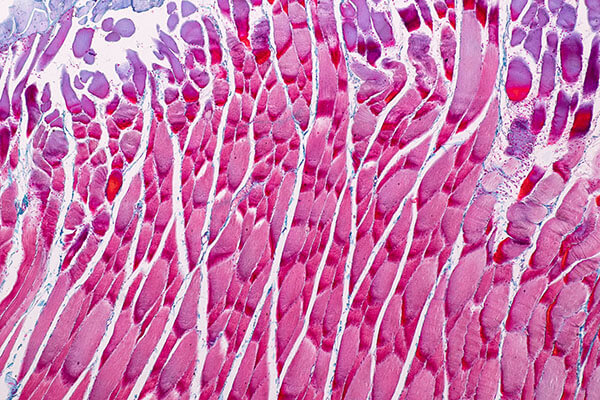4 Rules for Faster Muscle Recovery

When it comes to speeding recovery, not all techniques are as effective as you may think. While some strategies may lead to slight improvements in recovery, there are others that are proven to be extremely effective in getting you back to 100%, faster.
The way the human body recovers is a pretty simple process. Blood delivers essential nutrients and supplies to damaged tissue, the lymphatic system gets rid of waste, myokines are produced and released, and the repaired tissue is then remodeled. What most people don’t realize, is that the key facilitator driving each of these stages is muscle activation. Along with muscle activation, there are a few other key elements that will get you on the road to faster muscle recovery.
How to Recover Muscles Faster
1. Hydration

Water is crucial for our body’s systems to function properly. After all, nearly 60% of our bodies are comprised of water! For those who work out, it’s even more important to ensure proper hydration to keep the body running as efficiently as possible. When our bodies are adequately hydrated, our muscles can work at their highest level, both while working out and while recovering.
Proper hydration is so important for ensuring essential supplies are delivered to damaged tissue. Blood is responsible for transporting all these necessary nutrients and is made up of about 80% water.
To begin the repair process, blood delivers essential supplies to damaged tissue. Since nearly 80% of our blood is comprised of water, dehydration makes this process less efficient. Proper hydration is vital for allowing fluids to move efficiently throughout the body. Water also helps remove toxins that build up during exercise. If that’s not enough, it’s been shown that dehydrated muscles delay the rebuilding phase and can cause damaged tissue to break down even further. So, before you do anything else related to recovery, make sure you’re hydrated.
2. Nutrition
After a workout, it’s important to replenish your depleted energy stores. While being properly hydrated will allow essential nutrients to be delivered to damaged tissue, those nutrients need to be readily available for transport. Replenishing with protein and carbohydrates after a workout is key for ensuring your muscles have the nutrients they need for repair.
Our bodies get energy from the food we eat. Eating high quality and nutrient dense foods will help our bodies function more efficiently. What we put in, we get out. You can’t expect high quality results from eating low quality foods. Consuming enough protein is key, since protein is the building block of our body.
3. Active Recovery

Once adequately hydrated and nourished, active recovery techniques can then work their magic. Active recovery includes light activity to get muscles activated. There is a fine line between active recovery and further muscle damage, so make sure to always keep the muscle activation low stress. As mentioned earlier, this muscle activation will facilitate each stage of the recovery process. Normal movement throughout your day can help as well, but by incorporating active recovery techniques, you’ll be able to accelerate the process. The amazing thing about active recovery is that it addresses each part of the process, which is why it’s such an effective recovery method.
Going for a light job or swim is one way to do active recovery. Another is using Marc Pro, which creates non-fatiguing muscle activation using proprietary technology. Marc Pro is the only device that creates non-fatiguing contractions and unlike traditional active recovery techniques, you don’t have to worry about putting too much stress on muscle tissues. The result is a full and fast recovery that you can use to target specific or more general areas of the body.
4. Sleep

Many of the body’s restorative functions take place while asleep. During the NREM sleep stage, blood flow increases and tissue growth and repair takes place. It’s also during sleep when human growth hormones are produced. In fact, a sleep article on Bodybuilding.com says, “In men, 60-70% of daily human growth hormone secretion occurs during early sleep, which is typically when the deepest sleep cycles occur. Poor quality sleep can negatively impact human growth hormone levels.”
Most adults need 7-9 hours of sleep a night. Make sure you’re logging enough hours each night so you can get the maximum benefit for your body and mind.
Bottom Line
If you’re properly hydrated and nourished before going to bed, the muscle rebuilding process will be more effective. The same is true for active recovery. These factors are all important components of faster muscle recovery. If you lag on one, the whole process will be slowed down. For the fastest muscle recovery possible, make sure you concentrate on each of these factors.
What About Other Methods?
You may be wondering why other popular recovery methods aren’t listed here. What about foam rollers, compression devices, or percussion therapy? These have their place, but when you dig in, you’ll see that when it comes to rebuilding muscle tissue, they aren’t very useful. Of course, if a certain technique feels good to you, by all means use it. But just make sure you’re first taking the necessary measures for muscle recovery.
Foam Rollers
The intent of foam rollers is to break down myofascial tissue. While this can have its benefits for mobility or range of motion, breaking down tissue is the opposite of recovery. In the recovery process, muscle tissue is rebuilt.
Compression Devices
Similar to a massage that puts external pressure on the skin, some waste can be pushed out of muscles. However, the lymphatic system is passive and the more effective method to push out waste is by activating the lymphatic system (through muscle activation). Plus, the other stages of recovery aren’t addressed with compression. Some people may think there’s an increase in blood flow, but it turns out that’s not the case. Creating pressure on the muscle and then releasing that pressure will create an initial surge in blood flow, but there’s no net gain in blood flow. Muscle activation is the better tactic for vasodilation.
Percussion Therapy
These are similar to foam rollers and compression devices. They can help break down tight tissues, which may slightly improve blood flow, and the external pressure can help evacuate some waste. But, with no muscle activation taking place, they won’t do much to accelerate the healing process.
To learn more about how the muscle recovery process works, check out this page.